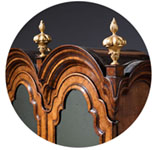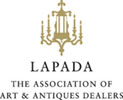Fine 18th Century Queen Anne Burr Walnut Eight-Day Longcase Clock
£12,500
Follow Us
Fine 18th Century Queen Anne Burr Walnut Eight-Day Longcase Clock
Early 18th-Century Burr Walnut Longcase Clock, Circa 1705-1710. England
This magnificent early 18th-century English longcase clock exemplifies exceptional craftsmanship and timeless elegance. Dating to circa 1705-1710, it showcases the finest qualities of Georgian-era clockmaking and is a remarkable addition to any distinguished collection.
The clock features a stunning burr walnut-veneered oak case of the highest quality.
The square hood is adorned with fine sound frets and flanked by walnut columns with wooden capitals and bases.
The trunk door is framed with elegant walnut D-mouldings and features a gilt wooden lenticle, revealing the pendulum’s movement.
The hood includes viewing windows on the sides, adding both function and decorative appeal.
The base, harmonizing perfectly with the hood, boasts shallow stepped mouldings and a plinth typical of the early 18th century.
The beautifully executed 12-inch brass dial features a silvered chapter ring with Roman numerals, half-hour markers, and Arabic five-minute divisions.
A subsidiary seconds ring is located below the XII, while a finely engraved date aperture rests above the VI.
The matted center includes delicate engraved detailing, with corners embellished by superb putti-and-crown spandrels.
The time is indicated by an exquisite pair of period blued-steel hands, with the hour hand richly pierced.
The eight-day weight-driven movement retains its remarkable originality.
The going train operates with an anchor escapement and a seconds pendulum.
The striking train is regulated by an outside count wheel and features the rare addition of striking in passing on the half-hour.
This clock has been fully restored and is in excellent working condition, preserving its original charm and historical significance. A superb example of early Georgian craftsmanship, this burr walnut longcase clock is a true statement piece that combines functionality with unparalleled artistry. Perfect for collectors or as a centerpiece in a refined interior.
Condition
Good. Wear consistent with age and use. Exquisite original condition and of exceptional colour. The movement has been beautifully maintained and serviced by our horologist.
Dimensions
Dimensions on request
PREVIOUSLY SOLD
No Results Found
The page you requested could not be found. Try refining your search, or use the navigation above to locate the post.
No Results Found
The page you requested could not be found. Try refining your search, or use the navigation above to locate the post.
YOU MAY ALSO LIKE
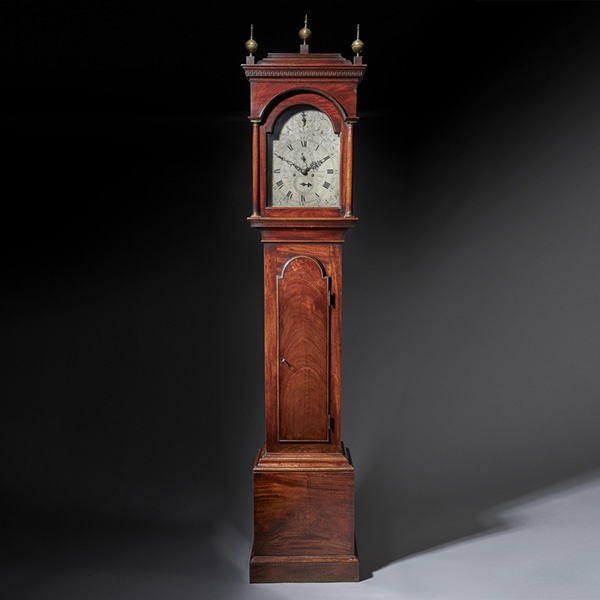
Fine George III 18th Century Period Mahogany Longcase Clock by Tomas Fowle
18th Century Period Mahogany Longcase Clock by Tomas Fowle £12,995 Follow Us18th Century Period Mahogany Longcase Clock by Tomas Fowle A fine George III period mahogany longcase clock of excellent colour, patination and proportions, circa...
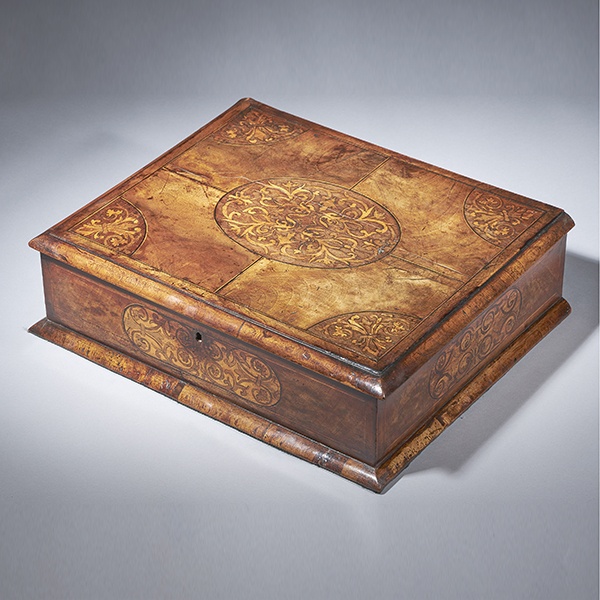
17th Century Figured Walnut and Seaweed Marquetry Lace Box
17th Century Figured Walnut and Seaweed Marquetry Lace Box £3,600 Follow Us17th Century Figured Walnut and Seaweed Marquetry Lace Box A fine and extremely rare figured walnut and seaweed marquetry 'lace box', circa.... let’s break it down -...
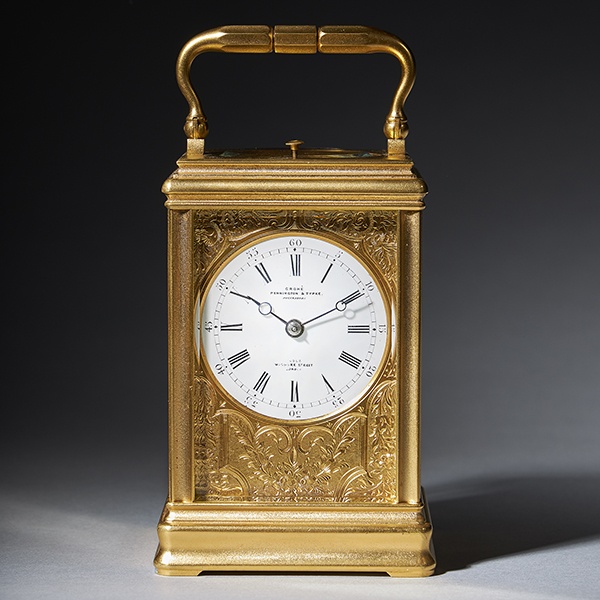
19th Century Repeating Gilt-Brass Carriage Clock by the Famous Drocourt
19th Century Repeating Gilt-Brass Carriage Clock by the Famous Drocourt £5,600 Follow Us19th Century Repeating Gilt-Brass Carriage Clock by the Famous Drocourt A superb repeating carriage clock with a gilt-brass gorge case by the famous maker...
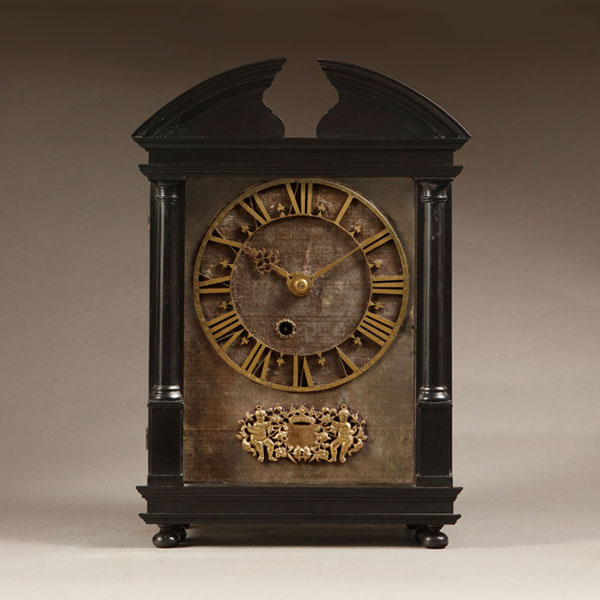
17th-Century Hague Clock Signed by Pieter Visbagh, circa 1675
Small 17th Century Hague clock made c. 1675 by Pieter Visbagh, who was apprenticed by Salomon Coster. The latter made the first pendulum clock according to the instructions of Christiaan Huygens, the internationally renowned scientist who developed the idea of applying a pendulum to a clock movement.
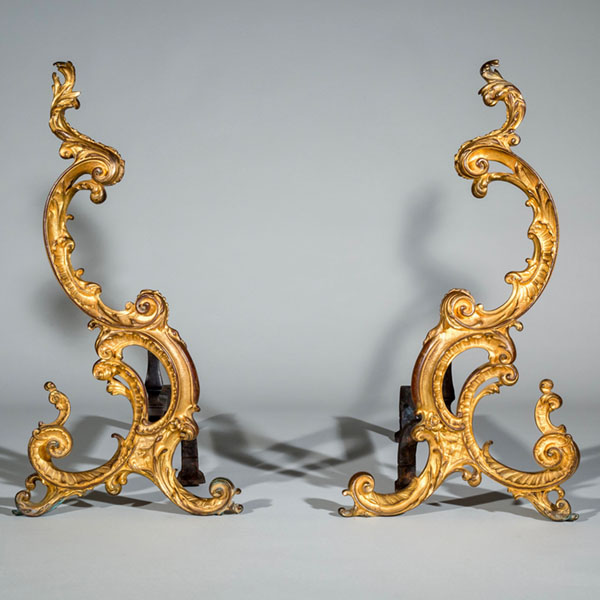
Pair of 18th-Century English Rococo Gilt Bronze Andirons or Firedogs
An exceptional pair of 18th century English Rococo gilt bronze andirons or fire dogs.
The bold shape of these andirons relate to designs of Thomas Johnson (1714–1778), one of London’s pioneers of the ‘Modern’ or French style, later known as Rococo.
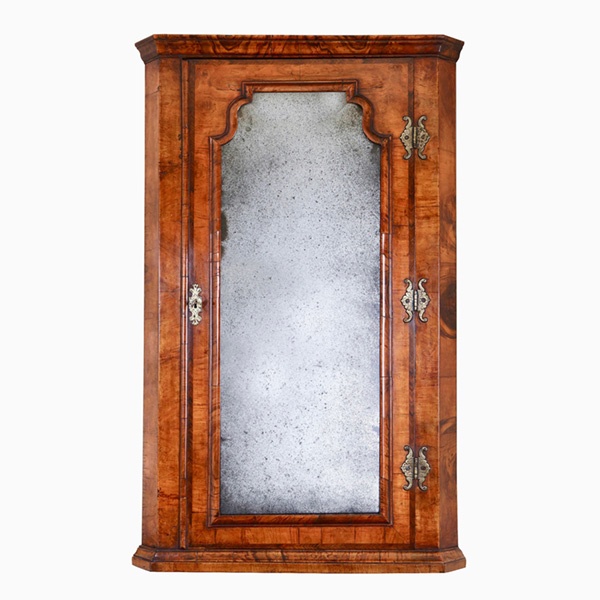
Queen Anne Walnut Corner Cupboard with Bevelled Mirror Plate
A truly remarkable find in original condition. To the door a shaped soft bevelled mirror plate is framed by a cross-grain molding of typical queen Anne design which is further cross-banded, feather-banded and edged to the opening with a single de-molding.

Fine George III 18th Century Period Mahogany Longcase Clock by Tomas Fowle
18th Century Period Mahogany Longcase Clock by Tomas Fowle £12,995 Follow Us18th Century Period Mahogany Longcase Clock by Tomas Fowle A fine George III period mahogany longcase clock of excellent colour, patination and proportions, circa...

17th Century Figured Walnut and Seaweed Marquetry Lace Box
17th Century Figured Walnut and Seaweed Marquetry Lace Box £3,600 Follow Us17th Century Figured Walnut and Seaweed Marquetry Lace Box A fine and extremely rare figured walnut and seaweed marquetry 'lace box', circa.... let’s break it down -...

19th Century Repeating Gilt-Brass Carriage Clock by the Famous Drocourt
19th Century Repeating Gilt-Brass Carriage Clock by the Famous Drocourt £5,600 Follow Us19th Century Repeating Gilt-Brass Carriage Clock by the Famous Drocourt A superb repeating carriage clock with a gilt-brass gorge case by the famous maker...

17th-Century Hague Clock Signed by Pieter Visbagh, circa 1675
Small 17th Century Hague clock made c. 1675 by Pieter Visbagh, who was apprenticed by Salomon Coster. The latter made the first pendulum clock according to the instructions of Christiaan Huygens, the internationally renowned scientist who developed the idea of applying a pendulum to a clock movement.

Pair of 18th-Century English Rococo Gilt Bronze Andirons or Firedogs
An exceptional pair of 18th century English Rococo gilt bronze andirons or fire dogs.
The bold shape of these andirons relate to designs of Thomas Johnson (1714–1778), one of London’s pioneers of the ‘Modern’ or French style, later known as Rococo.

Queen Anne Walnut Corner Cupboard with Bevelled Mirror Plate
A truly remarkable find in original condition. To the door a shaped soft bevelled mirror plate is framed by a cross-grain molding of typical queen Anne design which is further cross-banded, feather-banded and edged to the opening with a single de-molding.
